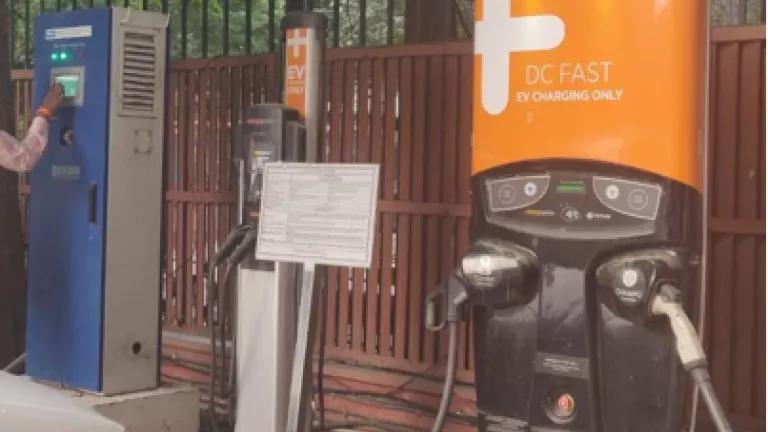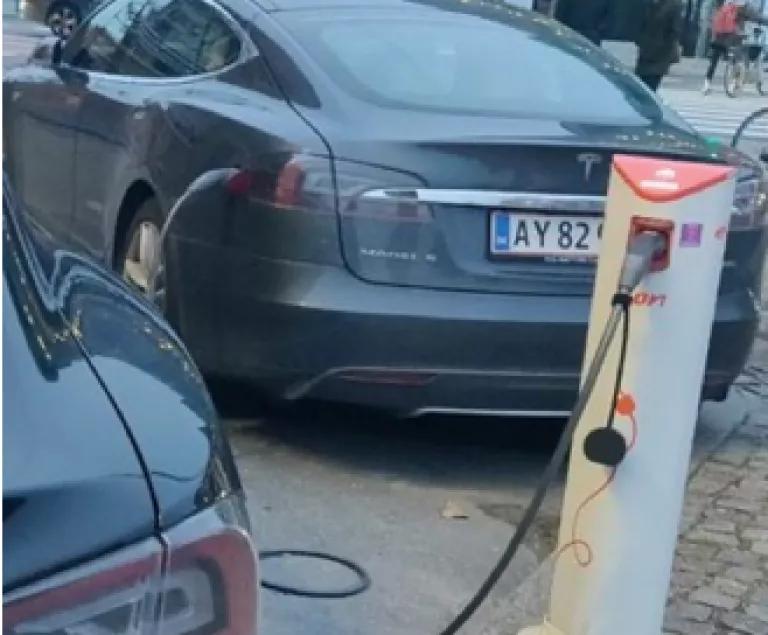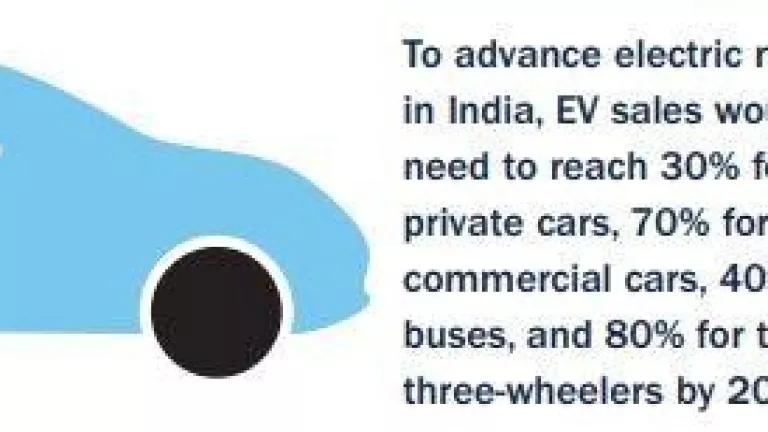Going Electric in India: EV Charging Station Locations
A widespread, accessible public charging infrastructure network is needed to support a robust Indian EV market.

Co-authored with Charu Lata and Jessica Korsh
Big businesses in India are going electric. Amazon.com Indian unit recently said it will deploy close to a hundred electric three-wheeler vehicles made by Mahindra Electric in seven cities across the country. The move will help Amazon India meet its target of employing 10,000 EVs in its fleet of delivery vehicles by 2025. Shortly after Amazon’s announcement, India’s Flipkart, a Walmart-owned e-commerce giant, said it will deploy more than 25,000 EVs in its supply chain by 2030 and looks to achieve a 100% transition to electric mobility in the next 10 years.
A widespread, accessible public charging infrastructure network is needed to support a robust Indian EV market. And a healthy ratio between the number of EVs to charging stations is important to encourage early adopters and relieve drivers of range anxiety. A technical committee (part of the state-level EV Steering Committee) recently met in Hyderabad to discuss including provisions to the existing building codes and government regulations to set up charging infrastructure in buildings in Telangana. Administrative Staff College of India (ASCI) and NRDC presented on how to regulate the EV policy and make it easier for the charging service providers and manufacturers to operate. There are a number of considerations when it comes to location and siting, the more specific position within a location, for EV charging stations. These include economics and utilization, maintenance, charger type, and interoperability.
Economics and Utilization
When the EV market is nascent and utilization is low, most network operators find the economics challenging, and seek to be paid through the utility or government without regard to utilization. However, utilization is not necessarily always the best metric to gauge success. An alternative metric could be the ratio of the charging network to the number of EVs in the applicable geographic region.
Traditional utility tariffs contain a feature called a demand charge (or fixed charge), which is a fixed fee based on the account’s peak load during a month. When charging utilization is low, that fee is spread over very few kWh resulting in extremely high operating costs. The solution is an EV rate that reduces the demand charge. Options include various types of demand charge holidays and demand charge rebates, both of which typically decline over some period of years while utilization is expected to increase and therefore obviate the need to mitigate demand charges.
Source: Charu Lata, NRDC
Maintenance
Because reliability is such an important factor, maintenance and repairs are high priority issues.
Operation of charging sites is a critical task because drivers rely on chargers to be in good working order. For that reason, a key determination is who will maintain and service the chargers. It is important to have the ability to diagnose and repair problems without dispatching a technician, but when necessary, provide adequate coverage by trained technicians with spare parts. Another issue is keeping the area surrounding the chargers clean and well maintained. If the chargers are in a retail area, then the landlord will typically handle it, but if located in an area that is not typically visited by the public then these tasks will have to be addressed.
Charger type
The type of location will dictate the type of charging and number of chargers to install. Station layout is important because there is no standard for where on a vehicle the charging port is located. The result is that, depending on the cord length and the location of the charge port, drivers wishing to charge may need to pay close attention to which plug they can access from which parking space and which direction they must face the vehicle.
The type of chargers installed is also critical to meeting customers’ needs. The Bharat chargers are small and can be easily installed, while the 50 kW charger is about the size of a refrigerator and installation is more expensive and complex. The various chargers also require different amounts of power and charge batteries at different speeds.

India has not standardized requirements around private or public charging infrastructure and instead has allowed numerous charging connector standards (for fast chargers) to be utilized by automakers. This means that charging stations may provide one, some, or all connector options to EV users on a common board or kiosk.
Interoperability
The lack of standardization can lead to interoperability challenges and decreased utilization of charging infrastructure. There are three types of interoperability: plug type, charger-to-network communication, and network to network communication.
- Plug type is of critical importance to drivers because without the right type of connector they will not be able to charge. One best practice is to illustrate the different plug shapes on apps and even on the chargers themselves because many drivers may not know the technical name of the plug.
- Charger-to-network interoperability is relevant only to the owner of the hardware, and this type of interoperability offers the owner the ability to swap network providers.
- Network to network interoperability, enables drivers with credentials for one network to authenticate and receive a charge on a different network. Private networks often prefer not to allow drivers to roam, but drivers very much like to be able to use a single credential on multiple networks. Requiring this is a best practice in public policy.
Open standards or open protocols signal interoperability and ensure that EV charging systems speak the same language. Certification is separate for hardware and software. Factors to consider when choosing a hardware original equipment manufacturer (OEM) include price, experience, reliability, ease of servicing and repair, quality of internal components, spare parts availability, whether technicians must be specially trained, build-quality, Open Charge Point Protocol (OCPP) compliance and certification, and warranty. Factors to consider when choosing a network provider include the ability to process and respond to trouble tickets, types of credentials that can be handled, hardware monitoring capabilities, customization options, call center capabilities, ability to dispatch and manage service technicians, credit card capabilities, reporting capabilities, compliance with OCPP and Open Charge Point Interface (OCPI), and price.

Source: Charu Lata, NRDC
Of the one million EV public charging points installed around the world, about 0.1%, are in India. For a country aiming to increase EV use to 30% by 2030, charging infrastructure needs to ramp up exponentially. NRDC and partners, ASCI and GERMI are working with states in India to expand the charging infrastructure network and advance electric mobility and build a clean energy future in India.
Highlighted Resources
- Stakeholder Driven Solutions for Financing Electric Mobility: Perspectives from Indian States
- Transitioning to Electric Mobility in Gujarat - Impacts and Benefits
- Economic and Policy Drivers for Electric Vehicle Charging Infrastructure in India – Preliminary Analysis
- Scaling-Up Electric Vehicle Charging Infrastructure: Lessons from China and the United States for the Indian Context
Michael Krauthamer of EV Advisors contributed to this blog.



